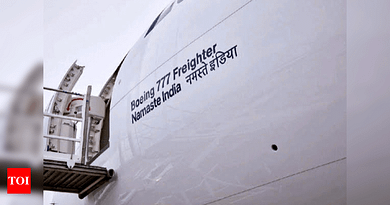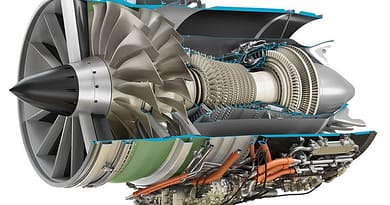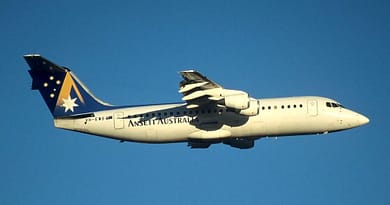Can Exosonic build America’s silent new Supersonic Air Force One?
What is Exosonic’s key selling point? A muted sonic boom.
A Californian start-up has joined forces with the United States Air Force to develop a supersonic aircraft for VIP transport, possibly also to replace the Air Force One.
Exosonic is an early-stage company working on a Mach 1.8, more than 9000 kms range, 70 passenger supersonic airliner.
How far is the company in developing this technology? Read on…
In its quest to develop supersonic VIP transport, the Air Force Directorate has been partnering with several smart start-ups. Earlier, another company called Hermeus was slated to modifying their Mach 5 capable jet into VIP transport for the United States Air Force. Now, Exosonic has joined this technology bandwagon.
“The Presidential and Executive Airlift Directorate is extremely excited to team with Exosonic on our quest to transform the future of executive airlift. As always, we are proud to be leading the charge to deliver cutting-edge technology to the world,” said Brigadier General Ryan Britton, Air Force Program Executive Officer for Presidential & Executive Airlift.
“By teaming with industry, we are proving the United States Air Force can deliver technology leaps while maximizing return on taxpayer investment.”

Hermeus Corporation is another start-up developing supersonic technologies for the USAF VIP fleet. Photo: Hermeus Corporation Newsroom
At present, The United States Air Force is responsible for providing presidential and executive transport, including operating Air Force One through the Presidential and Executive Airlift Directorate, which is based out of Wright-Patterson Air Force Base in Ohio.
Can Exosonic mute the sonic boom?
Exosonic’s USP in providing this technology hinges on its boom softening technology. Generally, because of the sonic boom, overland supersonic flights are rare, except when made mandatory due to military tactical/strategic reasons. This curtails the potential of supersonic flying in commercial aviation.
Exosonic says it can mute the sonic boom, meaning overland supersonic flying can become the norm. In turn, flight times can be significantly reduced.
“Transporting key decision-makers and teams around the world in half the time can be the difference between success and failure,” says Brigadier General Britton.
But these plans will take time to materialise as Exosonic doesn’t plan to make a prototype for a few more years. They don’t expect certification flights to occur until the end of the decade. In the meantime, the modified Boeing 747-200Bs that flies as Air Force One, is due to be replaced by brand new modified Boeing 747-800s. VIPs will have to make do with years of flying at conventional speeds till they become supersonic.

The USAF wants to replace conventional VIP transport with supersonic transport in the future. Photo: Bill Larkins via Wikimedia Commons
Low-boom supersonic flight will be the next inflection point in commercial aviation.
Norris Tie, CEO EXOSONIC
Making Supersonic Travel Accessible
Exosonic wants to make supersonic flying accessible to all. Advances made under this program will eventually filter down to commercial aircraft.
Exosonic says in a statement that the partnership will “enhance our commercial abilities to bring quiet supersonic travel to all. “
“Exosonic is excited to win this contract as it represents not only commercial but government promise for low-boom supersonic travel,” said the CEO of Exosonic, Norris Tie.




